EPM240T100C5N CPLD: Features, Applications and Datasheet
1.5/3.32.5/3.3V 0.5mm PMIC MAX® II Series EPM240 2.5V 100-TQFP
Intel EPM240T100C5N is a complex programmable logic device (CPLD) that belongs to the MAX II family. This article will introduce its features, applications and datasheet.
EPM240T100C5N Description
The Intel EPM240T100C5N is a complex programmable logic device (CPLD) that belongs to the MAX II family. It has 192 macrocells, 80 I/O pins, and operates at 2.5V or 3.3V. It uses flash memory to store logic functions and can be programmed using the Quartus II software. It comes in a 100-pin TQFP package and can be used for a variety of applications, such as glue logic, interface bridging, power management, and more.
EPM240T100C5N Features
It has 192 macrocells and 80 I/O pins that can be configured for various logic functions.
It operates at a frequency of up to 201.1 MHz and has a propagation delay of 4.7 ns.
It uses flash memory technology and has a total memory of 8192 bits.
It supports 2.5 V and 3.3 V supply voltages and has a low power consumption of 55 mA.
It comes in a 100-pin TQFP package with a lead-free finish.
Specifications
- TypeParameter
- Factory Lead Time8 Weeks
- Mounting Type
The "Mounting Type" in electronic components refers to the method used to attach or connect a component to a circuit board or other substrate, such as through-hole, surface-mount, or panel mount.
Surface Mount - Package / Case
refers to the protective housing that encases an electronic component, providing mechanical support, electrical connections, and thermal management.
100-TQFP - Surface Mount
having leads that are designed to be soldered on the side of a circuit board that the body of the component is mounted on.
YES - Number of I/Os80
- Operating Temperature
The operating temperature is the range of ambient temperature within which a power supply, or any other electrical equipment, operate in. This ranges from a minimum operating temperature, to a peak or maximum operating temperature, outside which, the power supply may fail.
0°C~85°C TJ - Packaging
Semiconductor package is a carrier / shell used to contain and cover one or more semiconductor components or integrated circuits. The material of the shell can be metal, plastic, glass or ceramic.
Tray - Series
In electronic components, the "Series" refers to a group of products that share similar characteristics, designs, or functionalities, often produced by the same manufacturer. These components within a series typically have common specifications but may vary in terms of voltage, power, or packaging to meet different application needs. The series name helps identify and differentiate between various product lines within a manufacturer's catalog.
MAX® II - Published2003
- JESD-609 Code
The "JESD-609 Code" in electronic components refers to a standardized marking code that indicates the lead-free solder composition and finish of electronic components for compliance with environmental regulations.
e3 - Part Status
Parts can have many statuses as they progress through the configuration, analysis, review, and approval stages.
Active - Moisture Sensitivity Level (MSL)
Moisture Sensitivity Level (MSL) is a standardized rating that indicates the susceptibility of electronic components, particularly semiconductors, to moisture-induced damage during storage and the soldering process, defining the allowable exposure time to ambient conditions before they require special handling or baking to prevent failures
3 (168 Hours) - Number of Terminations100
- Terminal Finish
Terminal Finish refers to the surface treatment applied to the terminals or leads of electronic components to enhance their performance and longevity. It can improve solderability, corrosion resistance, and overall reliability of the connection in electronic assemblies. Common finishes include nickel, gold, and tin, each possessing distinct properties suitable for various applications. The choice of terminal finish can significantly impact the durability and effectiveness of electronic devices.
Matte Tin (Sn) - annealed - Additional Feature
Any Feature, including a modified Existing Feature, that is not an Existing Feature.
IT CAN ALSO OPERATE AT 3.3V - HTS Code
HTS (Harmonized Tariff Schedule) codes are product classification codes between 8-1 digits. The first six digits are an HS code, and the countries of import assign the subsequent digits to provide additional classification. U.S. HTS codes are 1 digits and are administered by the U.S. International Trade Commission.
8542.39.00.01 - Terminal Position
In electronic components, the term "Terminal Position" refers to the physical location of the connection points on the component where external electrical connections can be made. These connection points, known as terminals, are typically used to attach wires, leads, or other components to the main body of the electronic component. The terminal position is important for ensuring proper connectivity and functionality of the component within a circuit. It is often specified in technical datasheets or component specifications to help designers and engineers understand how to properly integrate the component into their circuit designs.
QUAD - Terminal Form
Occurring at or forming the end of a series, succession, or the like; closing; concluding.
GULL WING - Peak Reflow Temperature (Cel)
Peak Reflow Temperature (Cel) is a parameter that specifies the maximum temperature at which an electronic component can be exposed during the reflow soldering process. Reflow soldering is a common method used to attach electronic components to a circuit board. The Peak Reflow Temperature is crucial because it ensures that the component is not damaged or degraded during the soldering process. Exceeding the specified Peak Reflow Temperature can lead to issues such as component failure, reduced performance, or even permanent damage to the component. It is important for manufacturers and assemblers to adhere to the recommended Peak Reflow Temperature to ensure the reliability and functionality of the electronic components.
260 - Supply Voltage
Supply voltage refers to the electrical potential difference provided to an electronic component or circuit. It is crucial for the proper operation of devices, as it powers their functions and determines performance characteristics. The supply voltage must be within specified limits to ensure reliability and prevent damage to components. Different electronic devices have specific supply voltage requirements, which can vary widely depending on their design and intended application.
2.5V - Terminal Pitch
The center distance from one pole to the next.
0.5mm - Time@Peak Reflow Temperature-Max (s)
Time@Peak Reflow Temperature-Max (s) refers to the maximum duration that an electronic component can be exposed to the peak reflow temperature during the soldering process, which is crucial for ensuring reliable solder joint formation without damaging the component.
40 - Base Part Number
The "Base Part Number" (BPN) in electronic components serves a similar purpose to the "Base Product Number." It refers to the primary identifier for a component that captures the essential characteristics shared by a group of similar components. The BPN provides a fundamental way to reference a family or series of components without specifying all the variations and specific details.
EPM240 - JESD-30 Code
JESD-30 Code refers to a standardized descriptive designation system established by JEDEC for semiconductor-device packages. This system provides a systematic method for generating designators that convey essential information about the package's physical characteristics, such as size and shape, which aids in component identification and selection. By using JESD-30 codes, manufacturers and engineers can ensure consistency and clarity in the specification of semiconductor packages across various applications and industries.
S-PQFP-G100 - Qualification Status
An indicator of formal certification of qualifications.
Not Qualified - Supply Voltage-Max (Vsup)
The parameter "Supply Voltage-Max (Vsup)" in electronic components refers to the maximum voltage that can be safely applied to the component without causing damage. It is an important specification to consider when designing or using electronic circuits to ensure the component operates within its safe operating limits. Exceeding the maximum supply voltage can lead to overheating, component failure, or even permanent damage. It is crucial to adhere to the specified maximum supply voltage to ensure the reliable and safe operation of the electronic component.
2.625V - Power Supplies
an electronic circuit that converts the voltage of an alternating current (AC) into a direct current (DC) voltage.?
1.5/3.32.5/3.3V - Supply Voltage-Min (Vsup)
The parameter "Supply Voltage-Min (Vsup)" in electronic components refers to the minimum voltage level required for the component to operate within its specified performance range. This parameter indicates the lowest voltage that can be safely applied to the component without risking damage or malfunction. It is crucial to ensure that the supply voltage provided to the component meets or exceeds this minimum value to ensure proper functionality and reliability. Failure to adhere to the specified minimum supply voltage may result in erratic behavior, reduced performance, or even permanent damage to the component.
2.375V - Programmable Type
These include Field Programmable Logic Devices (FPGAs), Complex Programmable Logic Devices (CPLD) and Programmable Logic Devices (PLD, PLA, PAL, GAL). There are also devices that are the analog equivalent of these called field programmable analog arrays.
In System Programmable - Propagation Delay
the flight time of packets over the transmission link and is limited by the speed of light.
7.5 ns - Output Function
An output function is a function that an optimization function calls at each iteration of its algorithm. Typically, you use an output function to generate graphical output, record the history of the data the algorithm generates, or halt the algorithm based on the data at the current iteration.
MACROCELL - Number of Macro Cells192
- JTAG BST
JTAG BST stands for Joint Test Action Group Boundary Scan Test. It is a testing technique used in electronic components to verify the functionality of integrated circuits on a printed circuit board. The JTAG BST method allows for testing of individual components without the need for physical access to the pins of the component, making it a valuable tool for debugging and testing complex electronic systems. By using a standardized test access port and a set of test logic, JTAG BST can help identify faults, shorts, and other issues in electronic components quickly and efficiently.
YES - Voltage Supply - Internal
Voltage Supply - Internal is a parameter in electronic components that refers to the internal voltage supply required for the proper functioning of the component. This voltage supply is typically generated within the component itself and is used to power its internal circuitry. It is important for the component to receive the correct internal voltage supply to ensure reliable operation and performance. The specified voltage supply range for a component must be adhered to in order to prevent damage or malfunction. Manufacturers provide this information in the component's datasheet to guide users in proper integration and usage.
2.5V 3.3V - Delay Time tpd(1) Max
The parameter "Delay Time tpd(1) Max" in electronic components refers to the maximum time delay between the input signal changing and the output signal responding. It represents the longest time it takes for the output to change after a change in the input signal. This parameter is crucial in determining the speed and performance of the component in various electronic circuits. A longer delay time can result in slower response times and potentially impact the overall functionality of the circuit. It is important to consider this parameter when designing or selecting electronic components to ensure proper operation and timing requirements are met.
4.7ns - Number of Logic Elements/Blocks240
- Length14mm
- Height Seated (Max)
Height Seated (Max) is a parameter in electronic components that refers to the maximum allowable height of the component when it is properly seated or installed on a circuit board or within an enclosure. This specification is crucial for ensuring proper fit and alignment within the overall system design. Exceeding the maximum seated height can lead to mechanical interference, electrical shorts, or other issues that may impact the performance and reliability of the electronic device. Manufacturers provide this information to help designers and engineers select components that will fit within the designated space and function correctly in the intended application.
1.2mm - Width14mm
- RoHS Status
RoHS means “Restriction of Certain Hazardous Substances” in the “Hazardous Substances Directive” in electrical and electronic equipment.
RoHS Compliant
EPM240T100C5N CAD Model
Symbol
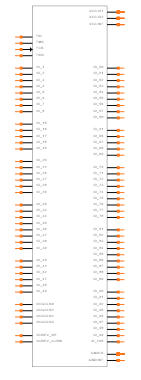
Footprint
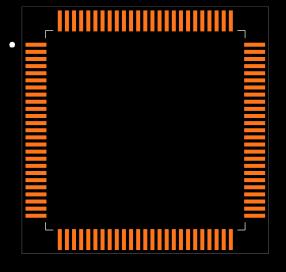
3D Model
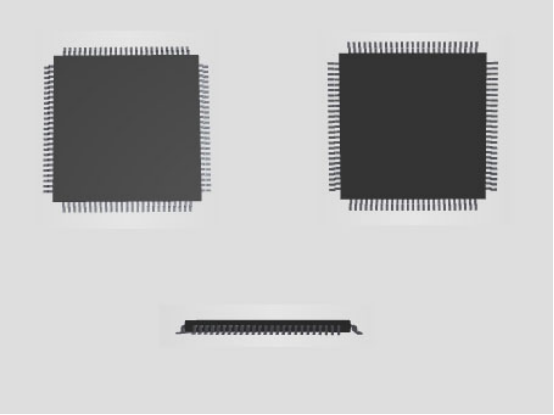
EPM240T100C5N Applications
Intel EPM240T100C5N is a versatile and powerful CPLD that can be used for various applications, such as:
Digital signal processing: The device can perform high-speed arithmetic operations, filtering, and data manipulation using its fast input registers, flash memory, and multi-volt I/Os. For example, it can be used to implement a digital filter for audio or video signals, or a digital modulator/demodulator for wireless communication.
Embedded system design: The device can act as a glue logic or a microcontroller interface for embedded systems, such as sensors, actuators, displays, or keyboards. It can also implement custom logic functions, such as timers, counters, state machines, or serial protocols. For example, it can be used to control a robotic arm, a smart home device, or a gaming console.
Prototyping and testing: The device can be used to prototype and test new designs or concepts quickly and easily, using its real-time ISP and JTAG features. It can also be used to debug and verify existing designs or systems, using its boundary-scan and JTAG translator features. For example, it can be used to emulate a missing component, a faulty circuit, or a new functionality.
EPM240T100C5N Manufacturer
Intel is a multinational corporation and technology company that develops and manufactures microprocessors, chipsets, graphics cards, memory, storage, software, and other products. Intel is one of the world’s largest and most influential semiconductor companies, and a leader in data center solutions, Internet of Things (IoT), and personal computing innovation. Intel was founded in 1968 by Robert Noyce and Gordon Moore, and is headquartered in Santa Clara, California. Intel’s mission is to create world-changing technology that enriches the lives of every person on earth.
Parts with Similar Specs
Datasheet PDF
- PCN Packaging :
- Datasheets :
- PCN Design/Specification :
What is Intel EPM240T100C5N?
Intel EPM240T100C5N is a complex programmable logic device (CPLD) that belongs to the MAX II family. It has 192 macrocells and 80 I/O pins that can be configured for various logic functions. It uses flash memory technology and supports 2.5 V and 3.3 V supply voltages.
How to program Intel EPM240T100C5N?
Intel EPM240T100C5N can be programmed using the Quartus II software tools from Intel. The software tools allow you to design, simulate, synthesize, place and route, and download your logic design to the device. You can also use the JTAG interface or the in-system programmability (ISP) feature to program the device.
How to buy Intel EPM240T100C5N?
You can buy Intel EPM240T100C5N from various online distributors, such as Utmel Electronics or Digi-Key Electronics. You can also contact Intel directly or visit their website for more information on how to order their products.
 Analog Devices Inc. 5962-8851301PA: A Versatile Instrumentation Amplifier for Military Applications
Analog Devices Inc. 5962-8851301PA: A Versatile Instrumentation Amplifier for Military Applications06 March 2024100
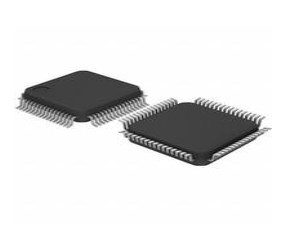 STM32F401RET6TR Microcontroller: 32-Bit, 64-LQFP, Pinout and Features
STM32F401RET6TR Microcontroller: 32-Bit, 64-LQFP, Pinout and Features21 January 20221599
 In-Depth Analysis of the Microchip PIC16LC622 Microcontroller
In-Depth Analysis of the Microchip PIC16LC622 Microcontroller28 February 2024130
![Arduino VS Raspberry pi[Video]: How to differentiate them?](https://res.utmel.com/Images/Article/d2187b34-53c4-4a01-8c0b-c062c718249f.png) Arduino VS Raspberry pi[Video]: How to differentiate them?
Arduino VS Raspberry pi[Video]: How to differentiate them?20 April 20224784
 A Comprehensive Guide to LTC6754ISC6#PBF LVDS Comparator
A Comprehensive Guide to LTC6754ISC6#PBF LVDS Comparator06 March 2024179
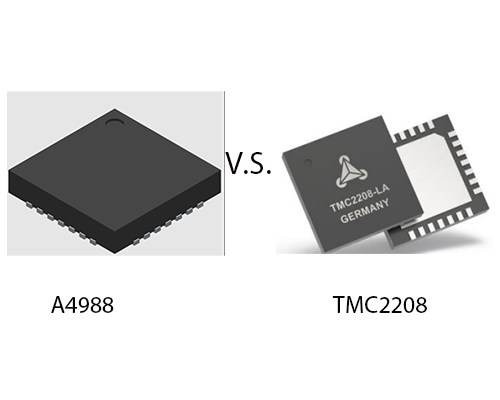 A4988 Vs. TMC2208
A4988 Vs. TMC220809 March 202210150
![MJE3055T Bipolar (BJT) Transistor NPN 60 V 10 A[Video]: Datasheet, Pinout, and Features](https://res.utmel.com/Images/Article/9450e3cd-4f81-4ab1-a1bd-de2561ca7ecf.png) MJE3055T Bipolar (BJT) Transistor NPN 60 V 10 A[Video]: Datasheet, Pinout, and Features
MJE3055T Bipolar (BJT) Transistor NPN 60 V 10 A[Video]: Datasheet, Pinout, and Features06 April 20222973
 Introduction to Microchip ATUC64L4UZAUT Microcontroller
Introduction to Microchip ATUC64L4UZAUT Microcontroller29 February 202469
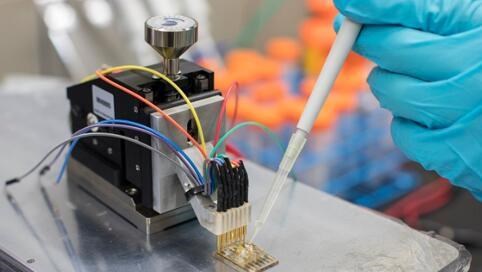 What is a Biosensor?
What is a Biosensor?23 March 20213149
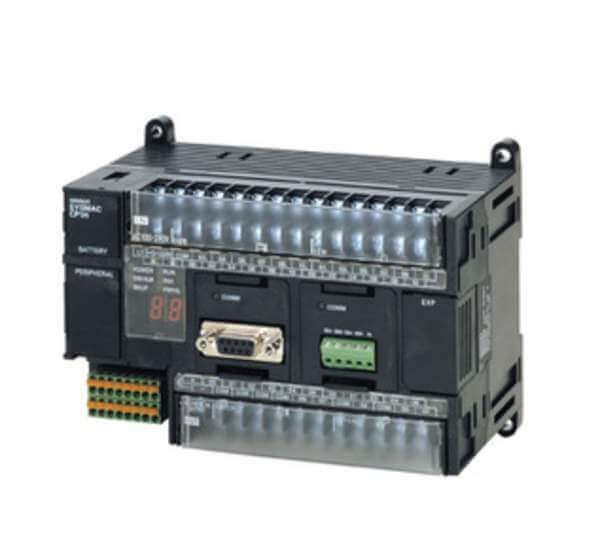 What are Programmable Logic Controllers?
What are Programmable Logic Controllers?07 September 20202650
 Understanding Adapter Cards in Modern Computers
Understanding Adapter Cards in Modern Computers05 July 2025642
 Detailed Analysis of Analog IC
Detailed Analysis of Analog IC22 November 20213026
 An Overview of SD Card
An Overview of SD Card12 April 20219933
 What is First In First Out (FIFO)?
What is First In First Out (FIFO)?30 November 20212793
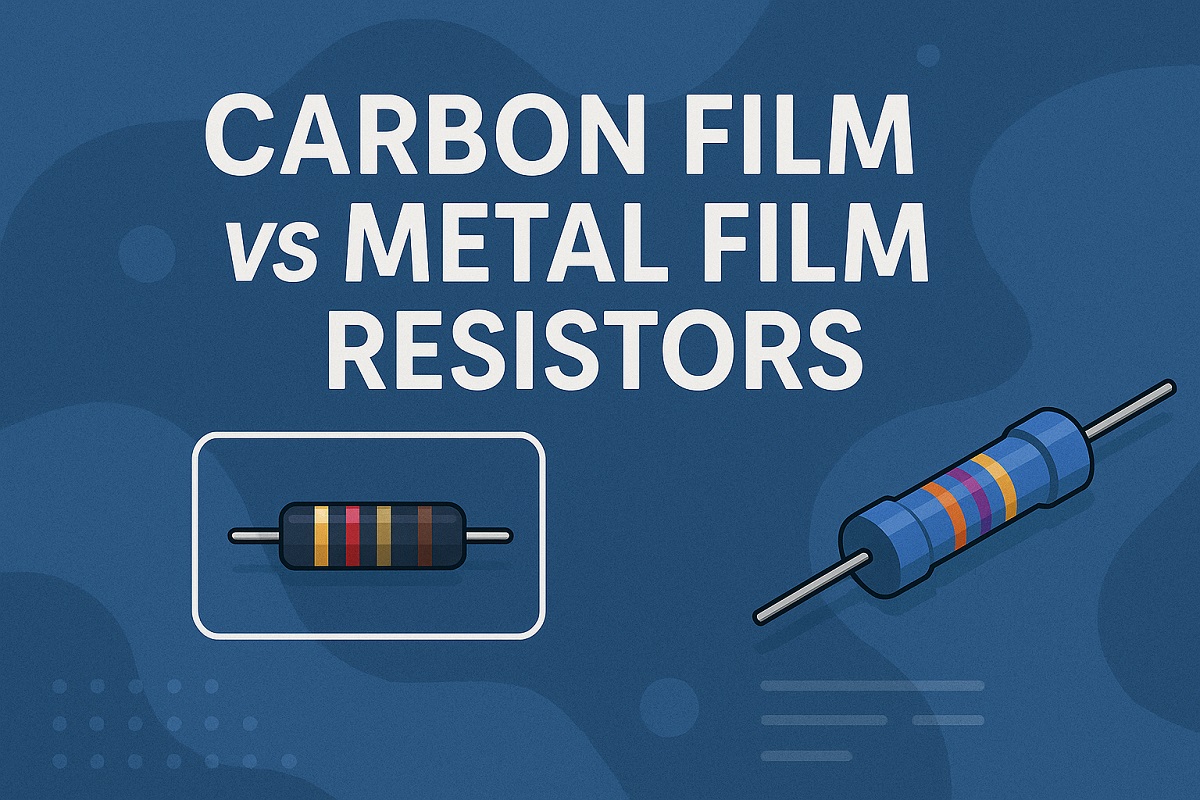 Carbon Film vs Metal Film Resistors: Complete Comparison Guide
Carbon Film vs Metal Film Resistors: Complete Comparison Guide19 May 20252080
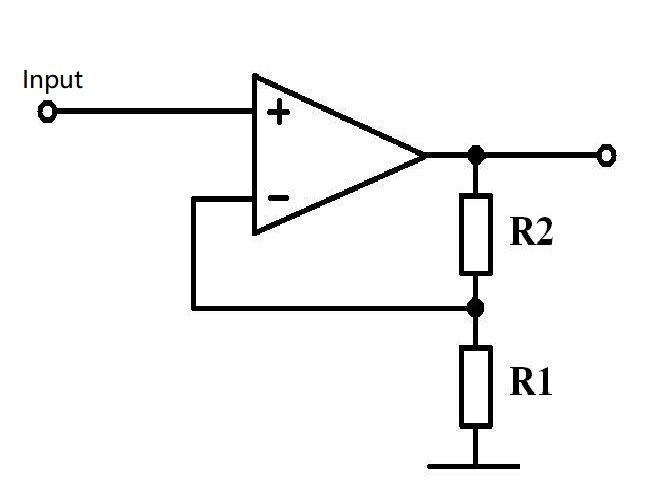 Introduction to DC Amplifier
Introduction to DC Amplifier07 November 202514602
Intel
In Stock: 1962
United States
China
Canada
Japan
Russia
Germany
United Kingdom
Singapore
Italy
Hong Kong(China)
Taiwan(China)
France
Korea
Mexico
Netherlands
Malaysia
Austria
Spain
Switzerland
Poland
Thailand
Vietnam
India
United Arab Emirates
Afghanistan
Åland Islands
Albania
Algeria
American Samoa
Andorra
Angola
Anguilla
Antigua & Barbuda
Argentina
Armenia
Aruba
Australia
Azerbaijan
Bahamas
Bahrain
Bangladesh
Barbados
Belarus
Belgium
Belize
Benin
Bermuda
Bhutan
Bolivia
Bonaire, Sint Eustatius and Saba
Bosnia & Herzegovina
Botswana
Brazil
British Indian Ocean Territory
British Virgin Islands
Brunei
Bulgaria
Burkina Faso
Burundi
Cabo Verde
Cambodia
Cameroon
Cayman Islands
Central African Republic
Chad
Chile
Christmas Island
Cocos (Keeling) Islands
Colombia
Comoros
Congo
Congo (DRC)
Cook Islands
Costa Rica
Côte d’Ivoire
Croatia
Cuba
Curaçao
Cyprus
Czechia
Denmark
Djibouti
Dominica
Dominican Republic
Ecuador
Egypt
El Salvador
Equatorial Guinea
Eritrea
Estonia
Eswatini
Ethiopia
Falkland Islands
Faroe Islands
Fiji
Finland
French Guiana
French Polynesia
Gabon
Gambia
Georgia
Ghana
Gibraltar
Greece
Greenland
Grenada
Guadeloupe
Guam
Guatemala
Guernsey
Guinea
Guinea-Bissau
Guyana
Haiti
Honduras
Hungary
Iceland
Indonesia
Iran
Iraq
Ireland
Isle of Man
Israel
Jamaica
Jersey
Jordan
Kazakhstan
Kenya
Kiribati
Kosovo
Kuwait
Kyrgyzstan
Laos
Latvia
Lebanon
Lesotho
Liberia
Libya
Liechtenstein
Lithuania
Luxembourg
Macao(China)
Madagascar
Malawi
Maldives
Mali
Malta
Marshall Islands
Martinique
Mauritania
Mauritius
Mayotte
Micronesia
Moldova
Monaco
Mongolia
Montenegro
Montserrat
Morocco
Mozambique
Myanmar
Namibia
Nauru
Nepal
New Caledonia
New Zealand
Nicaragua
Niger
Nigeria
Niue
Norfolk Island
North Korea
North Macedonia
Northern Mariana Islands
Norway
Oman
Pakistan
Palau
Palestinian Authority
Panama
Papua New Guinea
Paraguay
Peru
Philippines
Pitcairn Islands
Portugal
Puerto Rico
Qatar
Réunion
Romania
Rwanda
Samoa
San Marino
São Tomé & Príncipe
Saudi Arabia
Senegal
Serbia
Seychelles
Sierra Leone
Sint Maarten
Slovakia
Slovenia
Solomon Islands
Somalia
South Africa
South Sudan
Sri Lanka
St Helena, Ascension, Tristan da Cunha
St. Barthélemy
St. Kitts & Nevis
St. Lucia
St. Martin
St. Pierre & Miquelon
St. Vincent & Grenadines
Sudan
Suriname
Svalbard & Jan Mayen
Sweden
Syria
Tajikistan
Tanzania
Timor-Leste
Togo
Tokelau
Tonga
Trinidad & Tobago
Tunisia
Turkey
Turkmenistan
Turks & Caicos Islands
Tuvalu
U.S. Outlying Islands
U.S. Virgin Islands
Uganda
Ukraine
Uruguay
Uzbekistan
Vanuatu
Vatican City
Venezuela
Wallis & Futuna
Yemen
Zambia
Zimbabwe











